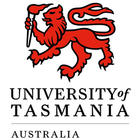Bachelor of Architecture and Built Environments
Bachelor of Architecture and Built Environments
Architecture develops ideas and forms that enrich experience and imagination with reference to environmental, social, and economic realities. Studying with us, you’ll build the discipline and creativity required to make a meaningful contribution to the field. Inspired by our Learning-By-Making tradition, your studies will be hands-on and filled with authentic…
Categories
COURSE DESCRIPTION
Architecture develops ideas and forms that enrich experience and imagination with reference to environmental, social, and economic realities.
Studying with us, you’ll build the discipline and creativity required to make a meaningful contribution to the field. Inspired by our Learning-By-Making tradition, your studies will be hands-on and filled with authentic interactions and real-world scenarios.
Our program includes architectural design methodologies, histories and theories of architecture, construction techniques and building performance, professional and ethical studies, and design research and communication. It will allow you to develop skills and practices that enable entry into design practice and a pathway to the profession.
Course objectives
The Bachelor of Architecture and Built Environments is a pre-professional course designed to ensure our graduates have the competencies necessary to gain admission to the Master of Architecture and equivalent courses in design fields addressing the built environment.
Core units within the program develop rigorous and creative thinking, and provide a grounding in sustainable and ethical practice. Choice Units and Electives enable you to design your portfolio and skill set, allowing entry into careers and pathways in your field of interest.
Learning Outcomes:
1 Critically relate the ethical, legal and political implications of design in the built environment in order to demonstrate socially and environmentally responsible Architecture.
2 Engage expert and non-expert audiences in imagining, visualising, and realising spatial design propositions.
3 Apply Architectural knowledge, skills and practices relating to the spatial and built environment in relation to people, cultures, environments and technologies.
4 Propose and test speculative built environment futures for abstract, real or virtual contexts through iterative methods of visualisation, fabrication and critique.
5 Formulate and justify Architectural positions on complex issues in the design of the built environment by drawing on a breadth and depth of disciplinary knowledge and methods of inquiry.
Career outcomes:
Our graduates are known for their principled attitude and hands-on skills. They are also celebrated for their technological awareness, and their focus on creating environmentally and socially conscious design solutions.
Careers relating to Architecture are growing, with employers demanding strong design skills across construction and building industries. Here are some of the top careers projected to grow in the next five years:
– Architectural, Engineering and Technical Services
– Architectural, Building and Surveying Technicians is one of the largest growing occupations in the Construction industry
Our graduates have very transferable skills, and have pursued careers in fields such as:
– building design
– construction and project management
– environmental and government policy
– disaster relief and international aid
– exhibition and event design
– architectural consultancy
– object design
– digital fabrication
Our Architecture program is the first step towards becoming a qualified Architect. To pursue this path, you will follow up your undergraduate degree with the postgraduate Master of Architecture.
Professional Accreditation
The University of Tasmania’s Architecture program, comprising the Bachelor of Architecture and Built Environments (BABE) and the Master of Architecture (MArch), is accredited by the Architects Accreditation Council of Australia (AACA).
REQUIREMENTS
Admission to undergraduate courses at the University of Tasmania requires the completion of qualifications equivalent to a 12th year of education in Australia.
You can also meet the General Entry Requirement for this course with the following qualifications or prior studies:
Completion of an equivalent AQF Certificate IV or above
Complete or incomplete (minimum 25 credit points) of previous tertiary study at Bachelor level or higher.
English language test scores: IELTS (Academic) – 6.0 (no individual band less than 5.5); TOEFL (iBT) – 72 (no skill below: Reading 10; Listening 9; Speaking 16; Writing 19); PTE Academic – 50 with no score lower than 42; UTAS English for Academic Purposes – EAP2 – 60% (no individual score less than 55%); Cambridge English C1 Advanced or B2 First – 169 with no less than 162 in any skill; Australian Education Management Group (AEMG) DEP EAP2 – Minimum overall score of 70% and no section score of less than 65%.
EDUCATIONAL INSTITUTION
The University of Tasmania was officially founded on 1st January 1890 and is located at Sandy Bay, Tasmania. In addition to the main campus at Sandy Bay, it also operates out of the Newnham Campus and the Cradle Coast Campus. The most popular courses offered are the environmental studies that include wilderness management, marine sciences and indigenous studies in Tasmanian literature. Other unconventional courses include agriculture development, studies on the community and population and ocean study programs. The university also comprises of a Music Conservatorium, Art school and a School of Clinical studies.




